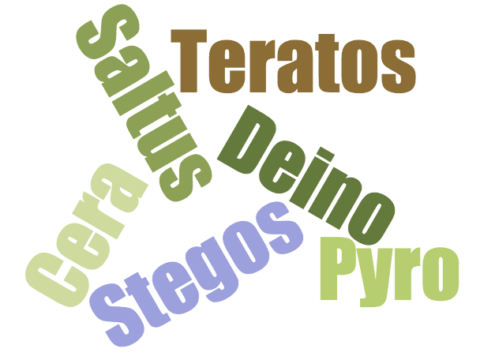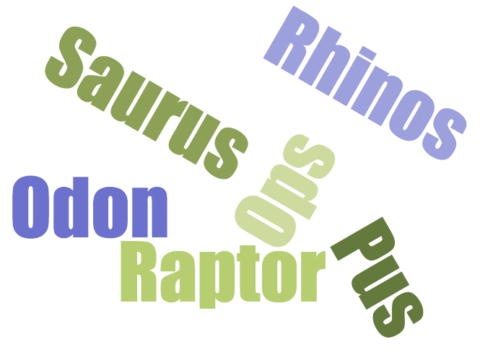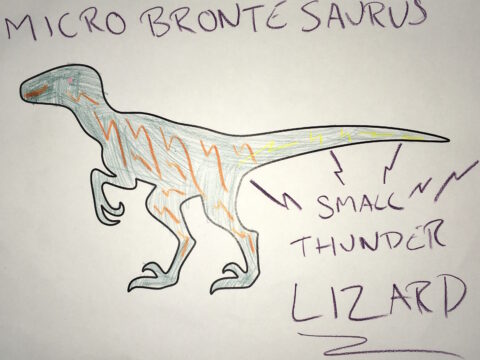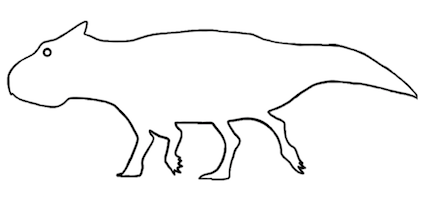What’s in a Name?
by Jocelyne LavackDinosaur names are carefully constructed from descriptive prefixes (beginning of a word) and suffixes (end of a word). Maybe your favourite dinosaur is the Archaeopteryx or the Triceratops, meaning “Ancient Wing” and “Three-horned Face” respectively. Create your own unique dinosaur by using our Dino Dice activity templates.

Prefixes are placed at the beginning of a word.
Step 1: Print and cut out the template. Step 2: Fold along the dotted lines. Step 3: Tuck and glue the tabs inside the cube.

Prefixes are placed at the beginning of a word.
Step 1: Print and cut out the template. Step 2: Fold along the dotted lines. Step 3: Tuck and glue the tabs inside the cube.

Suffixes are placed at the end of a word.
Step 1: Print and cut out the template. Step 2: Fold along the dotted lines. Step 3: Tuck and glue the tabs inside the cube.

Many of the prefixes and suffixes used to name dinosaurs are of Latin or Greek origin. Click here are the definitions of the examples used for the Dino Dice activity

A creative new dinosaur made by a museum visitor!

Buster is the first unique dinosaur species from British Columbia and has been given the new scientific name Ferrisaurus sustutensis. This unique combo of prefixes and suffixes means "The Iron Lizard from the Sustut River." We don't know Buster's exact colours, but it may have been striped or spotted to blend with its surroundings. What do you think Buster may have looked like? Click here for a fun colouring sheet!

Almost 50 years ago a geologist found dinosaur fossils in northern BC. Today those fossils are in the Royal BC Museum collection. Curator of palaeontology Dr. Victoria Arbour studies those fossils. Find out about her exciting discoveries!
View Pathway